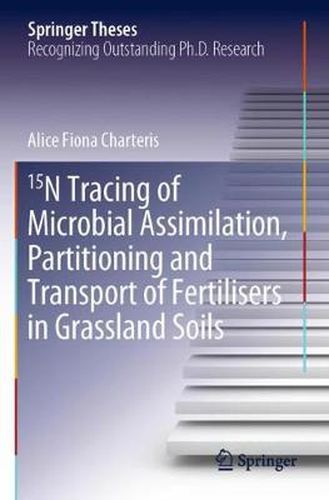Readings Newsletter
Become a Readings Member to make your shopping experience even easier.
Sign in or sign up for free!
You’re not far away from qualifying for FREE standard shipping within Australia
You’ve qualified for FREE standard shipping within Australia
The cart is loading…






This title is printed to order. This book may have been self-published. If so, we cannot guarantee the quality of the content. In the main most books will have gone through the editing process however some may not. We therefore suggest that you be aware of this before ordering this book. If in doubt check either the author or publisher’s details as we are unable to accept any returns unless they are faulty. Please contact us if you have any questions.
This book presents innovative research on soil nitrogen cycling and nitrate leaching with a view to improving soil management and fertiliser nitrogen use efficiency and reducing nitrogen leaching losses. In this regard, nitrogen-15 (15N)-labelled fertiliser was used as a biochemical and physical stable isotope tracer in laboratory and field experiments. The major outcome of the research was the development, validation and application of a new compound-specific amino acid 15N stable isotope probing method for assessing the assimilation of fertiliser nitrogen by soil microbial biomass.
The novelty of the method lies in its tracing of incorporated nitrogen into newly biosynthesised microbial protein in time-course experiments using gas chromatography-combustion-isotope ratio mass spectrometry. The approach provides previously unattainable insights into the microbial processing of different nitrogen fertilisers in different soils. Further, it identifies the mechanistic link between molecular-scale processes and observations of field-scale fertiliser nitrogen immobilisation studies. The method and the results presented here will have far-reaching implications for the development of enhanced recommendations concerning farm-based soil management practices for increasing soil productivity and reducing nitrogen losses, which is essential to minimising environmental impacts.
$9.00 standard shipping within Australia
FREE standard shipping within Australia for orders over $100.00
Express & International shipping calculated at checkout
This title is printed to order. This book may have been self-published. If so, we cannot guarantee the quality of the content. In the main most books will have gone through the editing process however some may not. We therefore suggest that you be aware of this before ordering this book. If in doubt check either the author or publisher’s details as we are unable to accept any returns unless they are faulty. Please contact us if you have any questions.
This book presents innovative research on soil nitrogen cycling and nitrate leaching with a view to improving soil management and fertiliser nitrogen use efficiency and reducing nitrogen leaching losses. In this regard, nitrogen-15 (15N)-labelled fertiliser was used as a biochemical and physical stable isotope tracer in laboratory and field experiments. The major outcome of the research was the development, validation and application of a new compound-specific amino acid 15N stable isotope probing method for assessing the assimilation of fertiliser nitrogen by soil microbial biomass.
The novelty of the method lies in its tracing of incorporated nitrogen into newly biosynthesised microbial protein in time-course experiments using gas chromatography-combustion-isotope ratio mass spectrometry. The approach provides previously unattainable insights into the microbial processing of different nitrogen fertilisers in different soils. Further, it identifies the mechanistic link between molecular-scale processes and observations of field-scale fertiliser nitrogen immobilisation studies. The method and the results presented here will have far-reaching implications for the development of enhanced recommendations concerning farm-based soil management practices for increasing soil productivity and reducing nitrogen losses, which is essential to minimising environmental impacts.